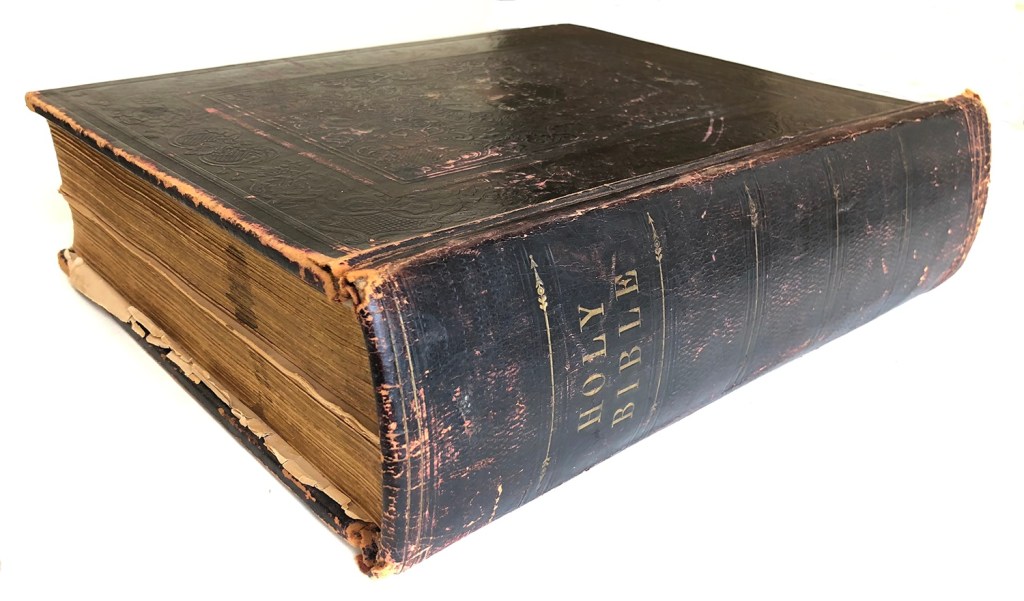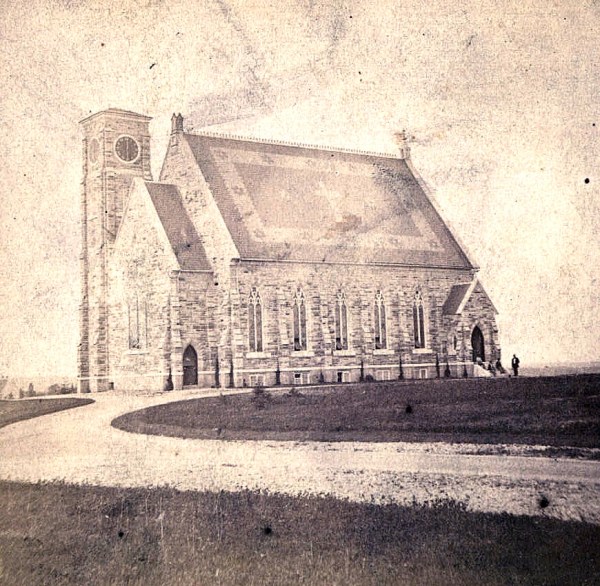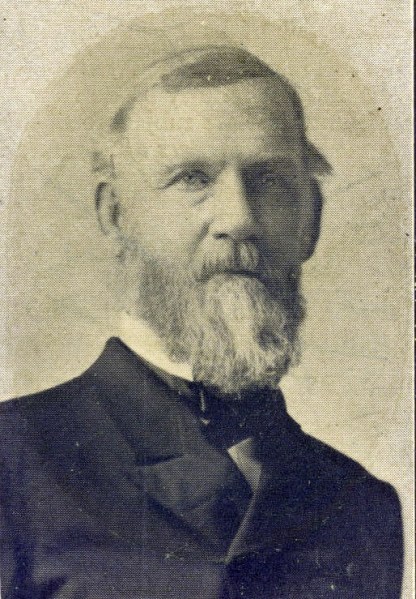
While many stories in the Bible have resonance for readers, the Book of Job held extra meaning for Civil War Veterans living at the Central Branch of the National Home for Disabled Volunteer Soldiers (NHDVS) in Dayton, Ohio. The 1861 edition of the Dayton Bible that was used in countless services at the chapel displays telltale color changes to certain pages due to light exposure and cracking along one part of the binding. These blemishes suggest that it was frequently opened to the chapters relating Job’s story. The sermons given by Reverend William B. Earnshaw about Job, a righteous man tested beyond measure, must have provided relief and comfort to the ex-soldiers who had witnessed and endured the horrors of battle.
The Dayton Bible highlights the important role that religious faith and chaplains played in the lives of the National Home residents as well as later generations of Veterans. When the NHDVS system was established in 1867, chaplains like Earnshaw were provided housing on the different National Home campuses and paid a salary of $1,500 per year plus forage for one horse. Religious services were held for both Protestant and Catholic Veterans and large weekly attendance numbers resulted in “much good, and largely contributed to the moral improvement of the mend and the peace and good order of the establishment.”
As the network of Soldiers Homes and later Veterans hospitals expanded across the nation in the early 1900s, ministry became a largely part-time affair performed by civilian clergy from the surrounding community. World War II changed everything, as sixteen million Veterans returned home, many needing medical assistance from the Veterans Administration. VA established a Chaplain Service in 1945 in the Department of Medicine and Surgery and named Reverend Crawford W. Brown, a former Army chaplain, as its first director. In the post-World War Two period, as the service was formalized, it added chaplains of different faiths and became an integral part of the care Veterans received at VA facilities. Chaplains made rounds, providing counseling and comfort to patients. They also led services in hospital chapels.
In 1964, the Veterans Administration Chaplain School was established at the Jefferson Barracks VA Hospital in St. Louis, Missouri, to better equip and train chaplains to meet the specific needs of Veterans. Today, there are over 800 full- and part-time chaplains representing a spectrum of religious faiths and traditions. Furthermore, every VA hospital contains a chapel for reflection and services. While the program has grown and evolved from the earliest days of Reverend Earnshaw’s ministry, the mission remains largely the same as it was in the 1870s: “To assure Veterans and their families the best possible spiritual guidance, religious services, and care.”
Reflecting its significance, the Dayton Bible was selected as the first object to be officially placed into the collection of the National VA History Center in 2021. The chapel where Reverend Earnshaw once preached from that copy of the Bible about the trials of Job still serves as a house of worship for Veterans and their families of the Protestant religion.
By Katie Rories
Historian, Veterans Health Administration
Share this story
Related Stories

History of VA in 100 Objects
Object 96: Postcard of Veterans Vocational School
In 1918, the government created the first nationwide vocational training system to help disabled Veterans acquire new occupational skills and find meaningful work. Over the next 10 years, more than 100,000 Veterans completed training programs in every field from agriculture and manufacturing to business and photography.

History of VA in 100 Objects
Object 95: 1840 Census of Pensioners
In a first, the 1840 census collected data on Veterans and widows receiving a pension from the federal government. The government published its findings in a stand-alone volume titled “A Census of Pensioners for Revolutionary or Military Services.”

History of VA in 100 Objects
Object 94: Southern Branch of the National Home
The Southern Branch of the National Home for Disabled Volunteer Soldiers opened in Hampton, Virginia, in late 1870. The circumstances surrounding the purchase of the property, however, prompted an investigation into the first president of the National Home’s Board of Managers, Benjamin Butler.




